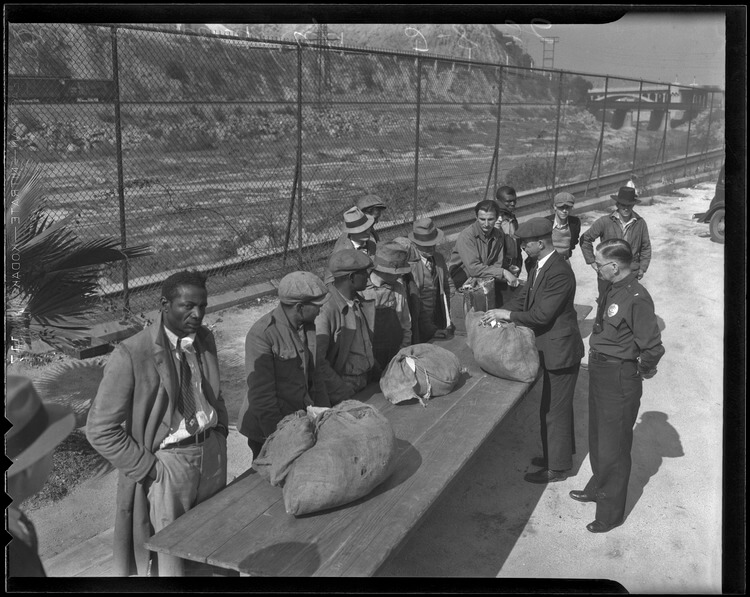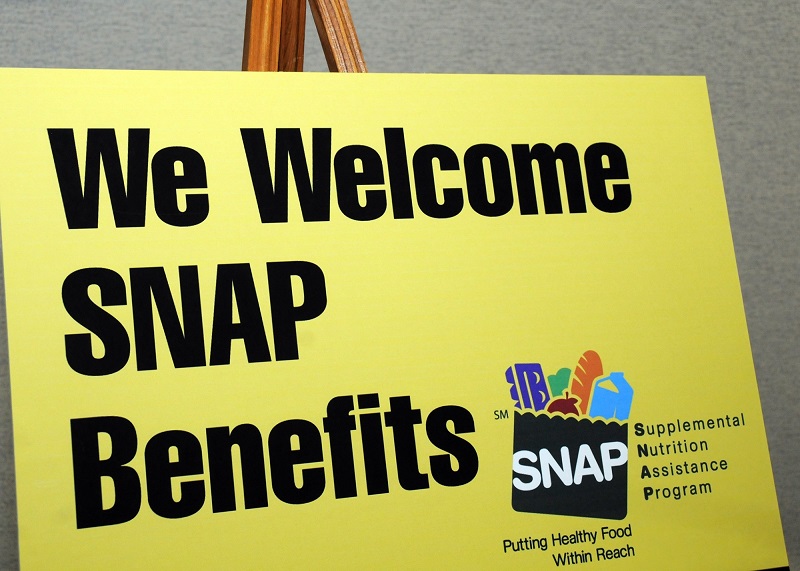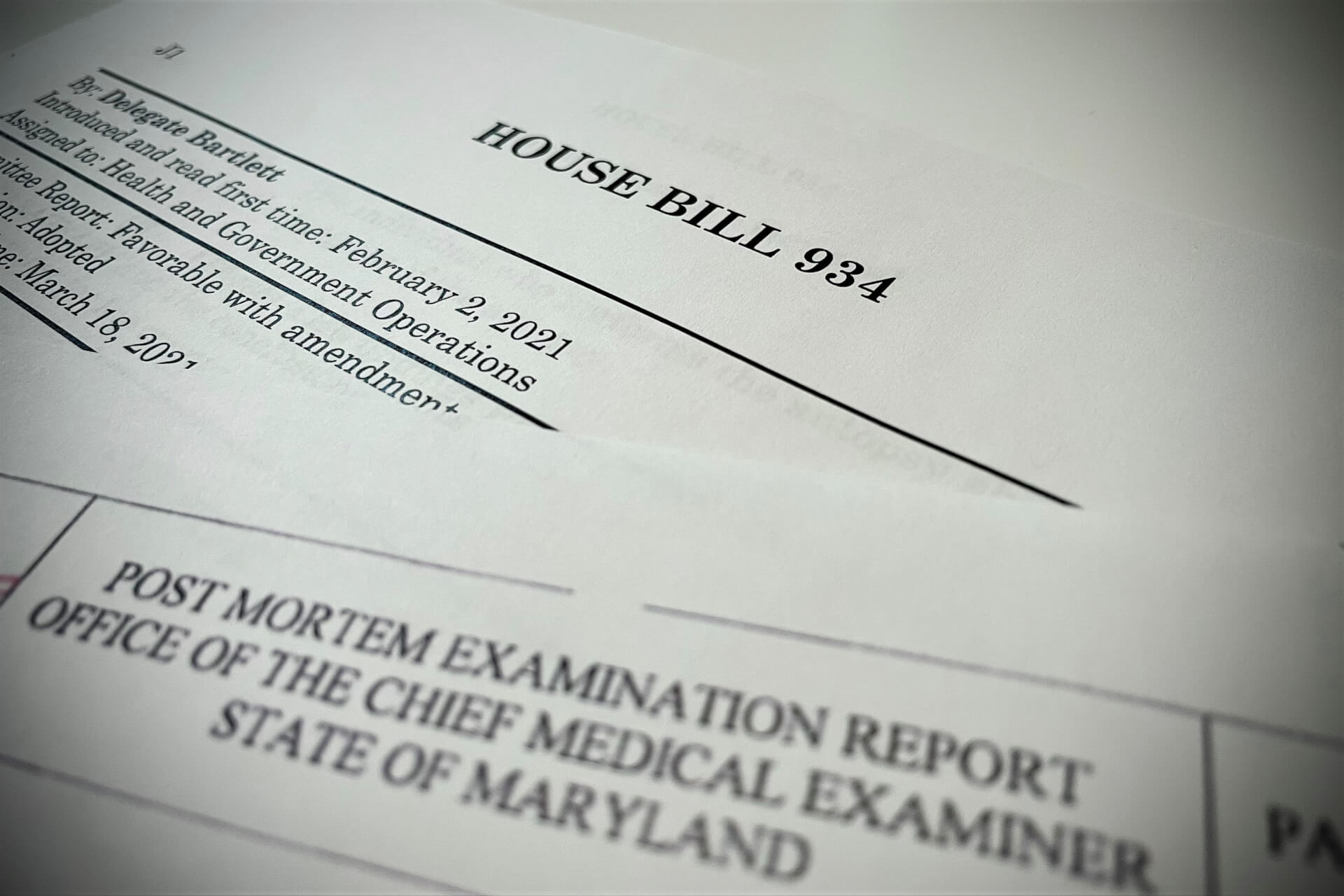
In February 1936 Los Angeles Police Chief James E. “Two-Gun” Davis sent 136 cops to the California border to set up “bum blockades.”
The blockades were the local government response to a stream of migrants, who were fleeing the Dust Bowl and swamping California’s welfare programs and public schools. If anyone crossing the state line did not have enough money, police at the blockade ordered them to turn back.
The blockades were famously ridiculed by folk singer Woody Guthrie in the song “Do Re Mi.” Guthrie’s song warned listeners that “California is a garden of Eden …but believe it or not, you won’t find it so hot if you ain’t got the do re mi.”
The blockades are long gone but their spirit lives on in Maryland where, if the food stamp database is any indication, the Hogan administration has set up a bum blockade to government data.
The state’s Public Information Act is very straightforward. With certain exceptions all government records are open to the public. To inspect a record any person can submit a written request and the government must respond in writing within 30 days with either the records or a reason why the records are not available.

But when Maryland Matters sent a written request for information about the food stamp database in December 2018 to the State Department of Human Services (DHS), it simply ignored the law. There was no written response as the law required in 30 days or 60 days or 90 days. At one point a DHS employee even claimed to have never heard of the law.
It wasn’t until four months later, after Maryland Matters filed a lawsuit against DHS, that anyone responded. After first denying that the records even existed, DHS then demanded over $4,600 in “programming” fees to the database vendor before it would turn over the records. That money would be in addition to the over $4,000 it cost to file suit against the government.
DHS did not relent until Aug. 8, just a day before it would have been required to answer the complaint. Rather than go to court, DHS turned over the records for free.The quest for the food stamp records began on Dec. 19, 2018, with repeated phone calls over two days to the Family Investment Administration (FIA), the agency in DHS that handles food stamp database. Despite making calls to several different numbers over two days, all calls immediately went to voicemail. No one replied to the messages left on the voicemail.
On Dec. 21, 2018, an attempt by a Maryland Matters reporter to visit the Family Investment Administration also proved fruitless. The receptionist at the DHS office in Baltimore said that no one was allowed to visit the FIA without an appointment. And the only way to get an appointment was to call the FIA.
With no other option available, Maryland Matters sent a Public Information Act (PIA) request to Lourdes Padilla, the DHS secretary, on Dec. 26, 2018. In that letter the agency was reminded it had 30 days to respond.
About two weeks later an email arrived from Labelle Hillgrove, a DHS ombudsman, asking for more information. In a subsequent telephone call, Hillgrove wanted to know why the information was being sought. When she was told it was needed in order to obtain the food stamp database, she gave her thanks and hung up.
And that was it. The 30-day deadline came, and the 30-day deadline went and there was only silence from DHS.On March 6 – 70 days after the PIA letter was sent — attorney Megan Benevento began trying to contact Katherine A. Morris, the PIA officer for DHS, to see if a lawyer could prod the department to respond. When no one answered Benevento’s emails, she tried to reach Morris by telephone. Benevento tried eight times but always received a busy signal. She then tried to reach Morris through the main office and was left on hold for more than 41 minutes.
When she finally did get through, Benevento encountered something she never expected. The person answering the phone for the DHS said she had never heard of the Public Information Act. The operator called her supervisor, and she as well said she had never heard of the Public Information Act.
Could Benevento be put through to Morris’ extension because she was the PIA officer? No, the receptionist said, because “she had no information on a communications department, a public information act officer or Katherine Morris.” The operator claimed to lack any access to a directory of phone numbers for DHS employees.
On April 10 — 105 days after the PIA letter was sent — DHS was served with a complaint asking the courts to order the agency to “disclose the requested records.”
It would take DHS almost another month — 28 days to be exact — to finally respond in writing. What followed was a puzzling round of negotiations as DHS officials variously claimed that they did not have some of the requested information only to later reverse themselves. When asked for the database documentation, they instead produced a “Y2K Test Plan” from 1997 saying it provided “a small view into the database.” In July, they said they would have to charge $4,600 for the food stamp database and then in August the price dropped to $3,000 for reasons that even the assistant attorney general could not itemize.
The price drop came on Aug. 7, only two days before the state would have to respond to the complaint. When that was rejected, and Benevento stated that she would fully pursue the litigation including designating an expert to come inspect the DHS database capabilities, DHS on Aug. 9 sent a letter saying it would hand over the database content and waive any fees because “it is in the public interest.”
It had only taken 226 day and $4,000 in legal fees. Apparently public information is only public in Maryland if you have the do re mi.
EDITOR’S NOTE: Several days after this article appeared, Morris, the Department of Human Services spokeswoman, provided the following statement, which we reprint verbatim even though we do not agree with her account: “The Department of Human Services was not provided with the opportunity to comment for this story prior to publication. We sought to satisfy Mr. Jaspin‘s requests; however, his story does not provide a complete picture of our interactions. In addition to promptly responding to Mr. Jaspin’s initial letter requesting Supplemental Nutrition Assistance Program (SNAP) data, we also provided detailed contact information for our Ombudsman to ensure he had access to a dedicated representative at our agency. Additionally, the Department contends that Mr. Jaspin was calling a phone number that did not belong to our agency. We support the public’s right to information about government activities, and we are fully committed to providing timely information and services.”
Read the whole series:
Part one: Meet the Food Stamp Firms of Maryland
Part two: All About the Hunger Industry, plus The Tax Deduction Recipe That Feeds Hunger
Part three: Measuring Hunger: One Size Does Not Fit All, plus Calculating How to Go Hungry
Part four: The No Man’s Land of Childhood Hunger
Part five: When the Floor Becomes the Ceiling
Part six: There’s No Wage Like the Minimum Wage
Part seven: The Volunteer Army Trying to Fight Hunger
***
Enjoy reading Maryland Matters?
Get our morning news roundup in your inbox. Free.
Click here to sign up.



 Creative Commons Attribution
Creative Commons Attribution